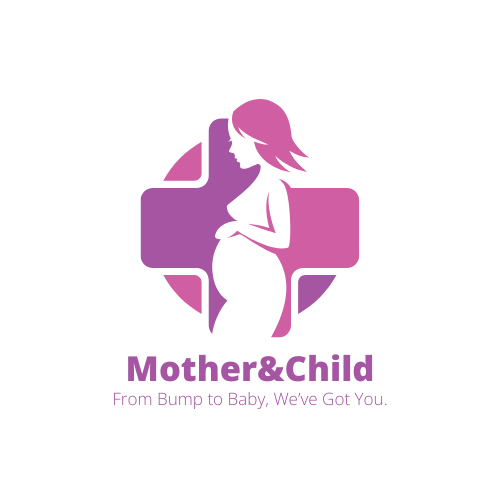
Abstract
Pregnancy-Induced Hypertension (PIH), including gestational hypertension, preeclampsia, and eclampsia, remains a leading cause of maternal and perinatal morbidity and mortality, especially in sub-Saharan Africa. This paper explores evidence-based strategies for the prevention, diagnosis, and management of PIH with a specific focus on low-resource settings. It highlights the role of early antenatal care, community health workers, access to medications like magnesium sulfate, and context-specific policy interventions. Global guidelines are translated for African realities to bridge the gap between knowledge and implementation.
Introduction
Hypertensive disorders affect up to 10% of pregnancies worldwide and are a major contributor to maternal deaths in Africa (World Health Organization [WHO], 2011). PIH encompasses a spectrum of conditions, including gestational hypertension, preeclampsia, and eclampsia, which may escalate rapidly without proper management (Magee et al., 2022). This paper provides a practical, evidence-based overview for healthcare providers, policymakers, and maternal health advocates in Africa and beyond.
Epidemiology and Burden in Africa
In sub-Saharan Africa, PIH is responsible for 10–15% of maternal deaths (Say et al., 2014). According to the Nigeria Demographic and Health Survey (2018), hypertensive complications contributed significantly to maternal mortality ratios exceeding 500 per 100,000 live births. Limited access to prenatal care, inadequate health infrastructure, and low awareness exacerbate the burden (Nkamba et al., 2020).
Diagnosis of PIH
The diagnostic criteria for PIH include:
- Blood pressure ≥140/90 mmHg on two separate occasions after 20 weeks of gestation.
- Presence of proteinuria (≥300 mg in 24-hour urine or protein/creatinine ratio ≥0.3).
- Severe features may include liver enzyme elevation, low platelets, visual disturbances, or signs of end-organ damage (American College of Obstetricians and Gynecologists [ACOG], 2020).
Routine blood pressure monitoring during antenatal visits remains the most feasible method in resource-limited settings. Portable automated blood pressure devices and urine dipsticks are recommended for community health centers.

Management Approaches
- Lifestyle and Early Detection
Encouraging pregnant women to attend antenatal care (ANC) early and regularly is critical. WHO recommends at least eight ANC visits (WHO, 2016). However, only 52% of women in sub-Saharan Africa meet this standard (UNICEF, 2021).
- Pharmacological Management
- Antihypertensives: Methyldopa, labetalol, and nifedipine are considered safe and effective (Magee et al., 2022).
- Magnesium Sulfate: A life-saving anticonvulsant for preventing eclampsia, available in WHO’s essential medicines list. The “Save Mothers, Give Magnesium Sulfate” campaign has increased availability in countries like Ethiopia and Uganda (Path, 2022).
- Delivery Planning
In severe preeclampsia, delivery is the definitive treatment. Timing should balance maternal and fetal risks. In high-risk settings, corticosteroids for fetal lung maturity and referral systems are vital.
Community-Based Interventions in Africa
Programs leveraging community health workers (CHWs), like Kenya’s Linda Mama initiative, improve awareness, screening, and referral (Ministry of Health Kenya, 2023). Mobile health platforms such as MomConnect (South Africa) have demonstrated increased ANC attendance through SMS reminders (Barron et al., 2018).
Barriers to Effective Management
Key barriers include:
- Shortages of trained personnel.
- Stockouts of essential drugs.
- Weak referral systems.
- Cultural beliefs that delay care seeking.
Strengthening district-level capacity and integrating maternal care into Universal Health Coverage (UHC) agendas are crucial (UNFPA, 2021).
Global Guidelines and Local Adaptation
While ACOG and WHO offer detailed guidelines, context-specific adaptation is needed. The PRE-EMPT and CLIP trials emphasized task-shifting and mobile decision aids as scalable solutions in Africa and South Asia (von Dadelszen et al., 2019).
Conclusion and Recommendations
Managing PIH requires a combination of clinical vigilance, early intervention, community engagement, and systemic reform. African countries must prioritize maternal health by:
- Investing in primary health infrastructure.
- Ensuring drug supply chains.
- Empowering frontline health workers with training and technology.
These strategies will not only reduce maternal mortality but also improve long-term health outcomes for women and newborns.
References
- American College of Obstetricians and Gynecologists (ACOG). (2020). Hypertension in Pregnancy: ACOG Practice Bulletin Summary. https://www.acog.org/clinical/clinical-guidance/practice-bulletin/articles/2020/06/chronic-hypertension-in-pregnancy
- Barron, P., et al. (2018). The MomConnect mHealth initiative in South Africa: Early impact and lessons learned. Journal of Public Health Policy, 39(2), 183–197. https://doi.org/10.1057/s41271-017-0095-x
- Magee, L. A., et al. (2022). Diagnosis, evaluation, and management of hypertensive disorders of pregnancy. Pregnancy Hypertension, 27, 1–23. https://doi.org/10.1016/j.preghy.2021.12.002
- Ministry of Health Kenya. (2023). Linda Mama Program Overview. https://www.health.go.ke/linda-mama/
- Nkamba, D. M., et al. (2020). Maternal and perinatal outcomes associated with hypertensive disorders of pregnancy in Sub-Saharan Africa: A multi-country analysis. BMC Pregnancy and Childbirth, 20, 770. https://doi.org/10.1186/s12884-020-03469-w
- Path. (2022). Magnesium Sulfate for Pre-eclampsia and Eclampsia. https://path.azureedge.net/media/documents/MNCH_magnesium_sulfate_br.pdf
- Say, L., et al. (2014). Global causes of maternal death: A WHO systematic analysis. The Lancet Global Health, 2(6), e323–e333. https://doi.org/10.1016/S2214-109X(14)70227-X
- UNICEF. (2021). Antenatal Care Coverage – Sub-Saharan Africa. https://data.unicef.org/topic/maternal-health/antenatal-care/
- United Nations Population Fund (UNFPA). (2021). State of the World’s Midwifery Report. https://www.unfpa.org/sowmy
- von Dadelszen, P., et al. (2019). The PRE-EMPT (Pre-eclampsia/Eclampsia Monitoring, Prevention and Treatment) initiative: Collaborative approaches to reduce maternal and perinatal deaths. Reproductive Health, 16(1), 48. https://doi.org/10.1186/s12978-019-0717-1
- World Health Organization (WHO). (2011). WHO recommendations for prevention and treatment of pre-eclampsia and eclampsia. https://apps.who.int/iris/handle/10665/44703
- World Health Organization (WHO). (2016). Recommendations on Antenatal Care for a Positive Pregnancy Experience. https://www.who.int/publications/i/item/9789241549912



Leave Your Comment